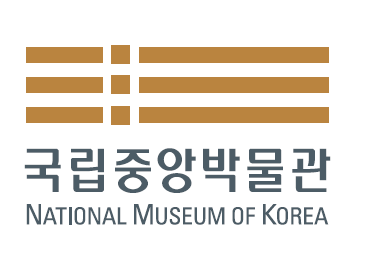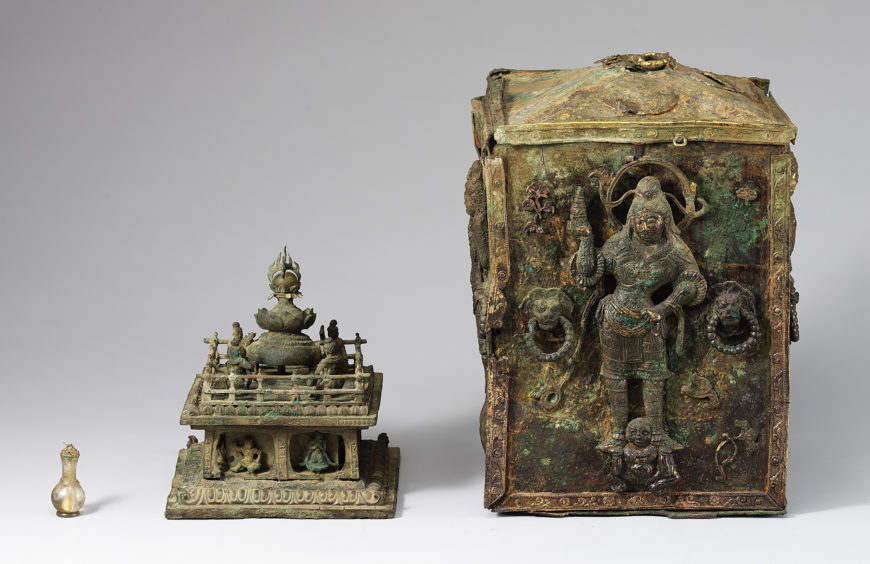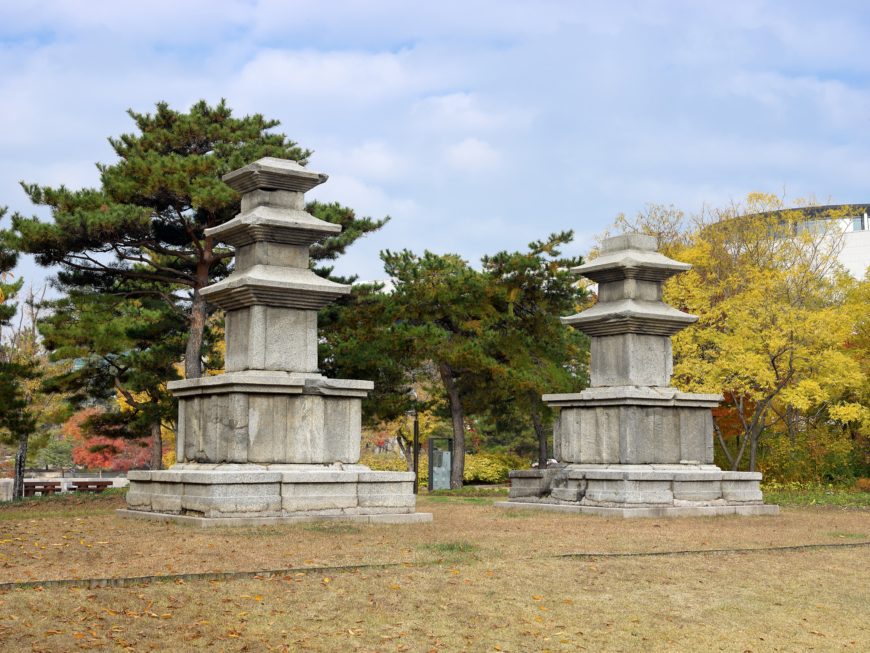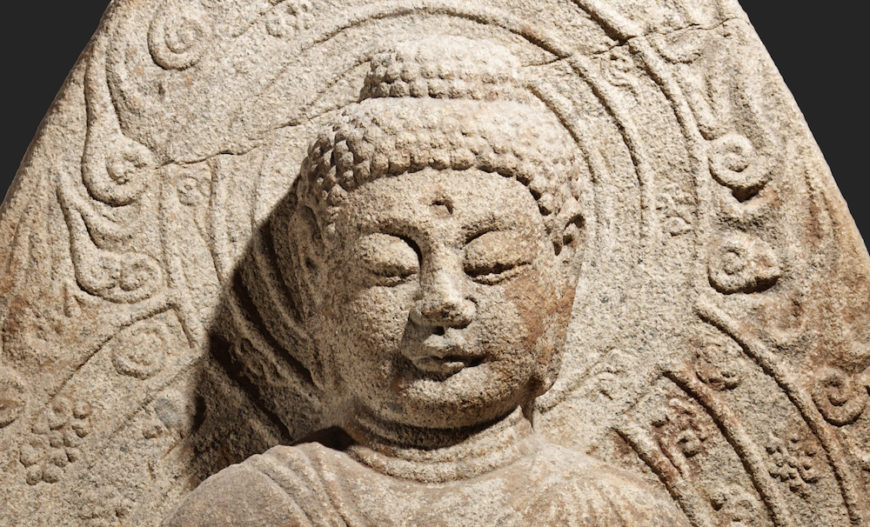Essay by Choi Seungae
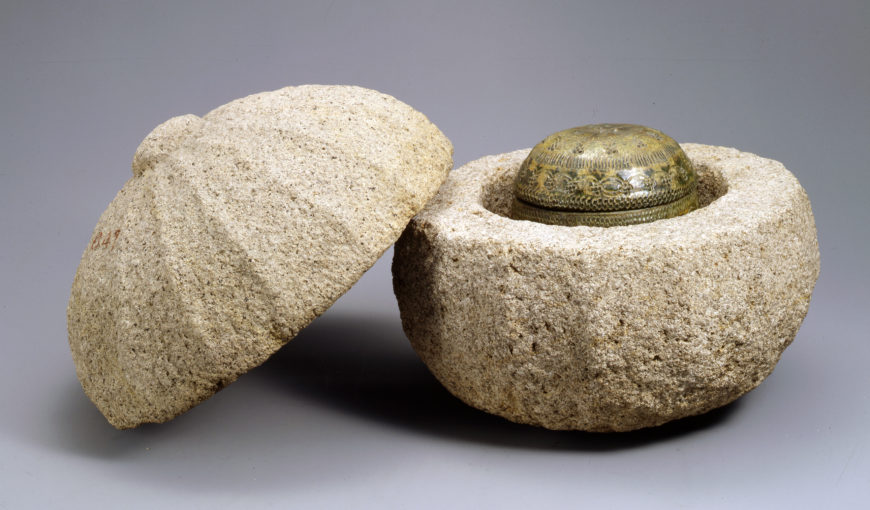
Stone casket and funerary urn, 9th century (Unified Silla), casket: 43 cm high, urn: 16.4 cm high, attributed to Gyeongju, National Treasure 125 (National Museum of Korea; photo: Cultural Heritage Administration of the Republic of Korea)
Throughout history, regardless of time or place, people have always nurtured a fascination with death. Of course, almost all of our questions about death remain unanswered. What is death? What comes after death? How do we face our own death?
By examining how people of the past treated their dead, we can gain valuable insights about their cultures and societies. As such, archaeologists have always paid particular attention to burial sites and artifacts related to funerary rituals. From ancient times to the Three Kingdoms Period, the people of the Korean peninsula believed that the world of the dead was similar to the world of the living. Accordingly, the general practice was to carefully bury the deceased within graves that functioned as “residences” in death, without any alterations to the body. However, the Three Kingdoms Period saw the rise of a new funerary practice that represented a significant deviation from previous perceptions of life and death: cremation, which entailed the complete destruction of the deceased’s body.
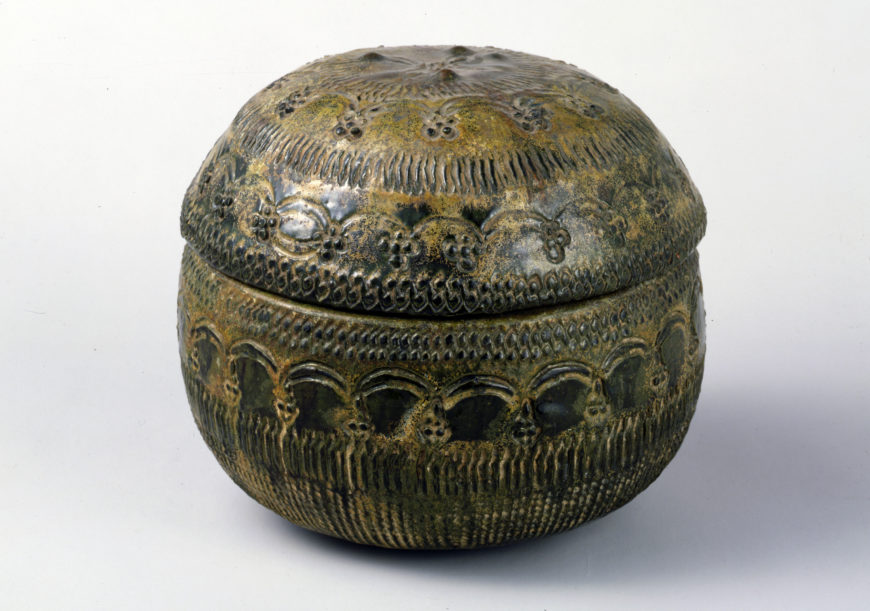
Funerary urn, 9th century (Unified Silla), 16.4 cm high, attributed to Gyeongju, National Treasure 125 (National Museum of Korea; photo: Cultural Heritage Administration of the Republic of Korea)
Description of the stone casket and funerary urn
This stone casket and funerary urn, designated as National Treasure 125 and presently on display in the Unified Silla Room of the National Museum of Korea, was once used to hold cremated remains. The outer stone casket, made of granite, served as a protective container for the inner funerary urn, where the ashes were kept. Both the outer casket and inner urn are roughly spherical in shape, with separate bodies and lids. The body of the inner urn has a rounded base, a short mouth, and a ledge for the lid. Both the body and lid of the urn were elaborately decorated with a stamped pattern of flowers, and then covered with an even coating of green glaze. The outer surface of the casket was also subtly carved with facets that resemble the petals of a flower. Both the body and lid of the stone casket were hollowed out to create a rounded space to accommodate the inner urn and its lid.
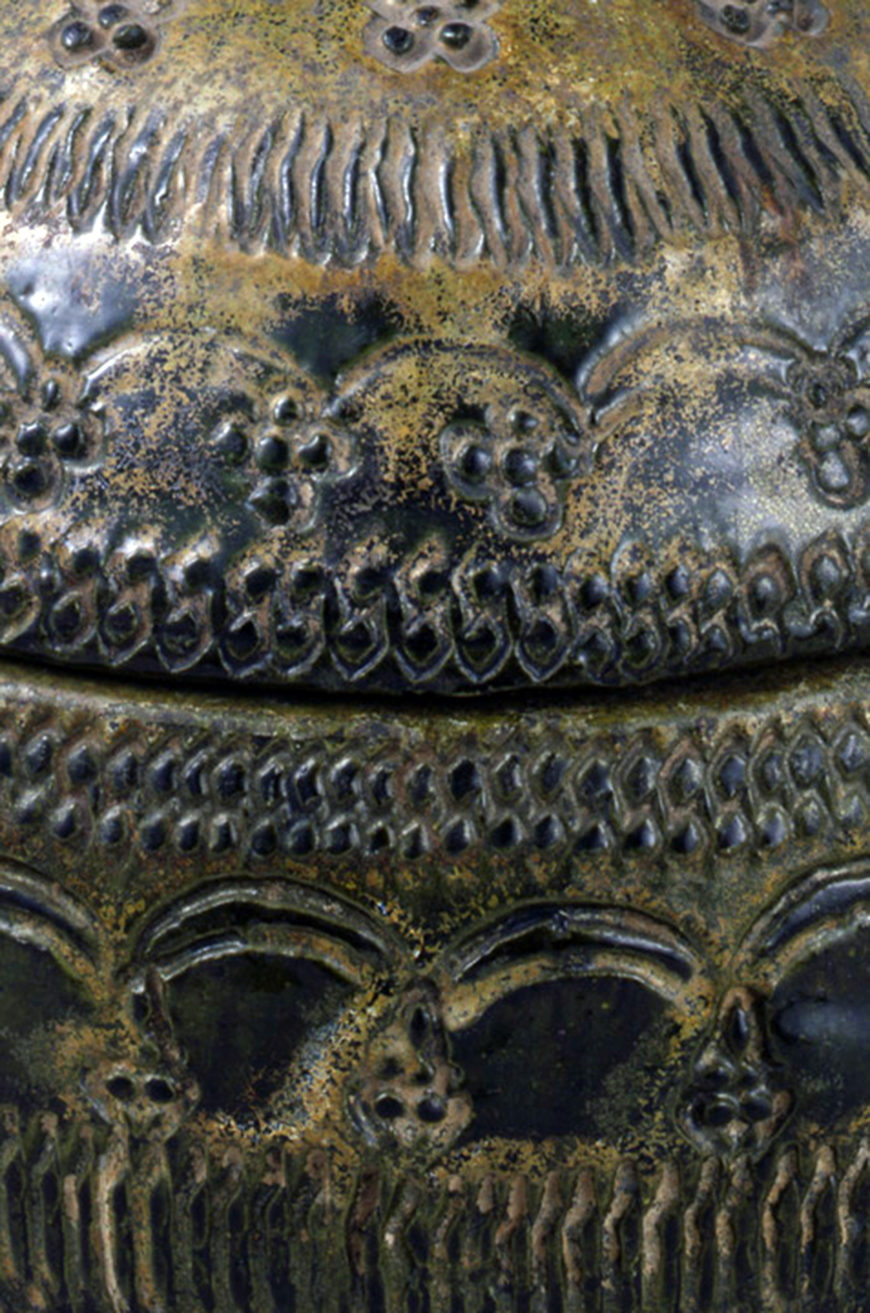
Detail of surface, funerary urn, 9th century (Unified Silla), 16.4 cm high, attributed to Gyeongju, National Treasure 125 (National Museum of Korea; photo: Cultural Heritage Administration of the Republic of Korea)
Funerary urns coated with green glaze required considerable effort to produce. The unique color of the urn—dark green on the inside and lighter green on the outside—is the result of a coating of a lead-based glaze. Although this type of glaze was used throughout the Three Kingdoms Period, it was not frequently applied. It was generally used only on special ceramic vessels (such as jars with four lugs and cups with saucers) or on special roof tiles (such as roof-end tiles carved with the faces of beasts). Also, the stamped patterns of flowers, dots, and spangles on the lid and body are perfectly aligned, showing that great care was taken to enhance the opulence and design of the urn. The body and lid of the stone casket were carved from a single piece of granite, and the interior was hollowed to perfectly fit the inner urn, demonstrating careful planning and precision. Finally, continuing the flower motif, the exterior of the stone casket was delicately carved with facets that emulate the petals of a flower. Stone caskets for funerary urns, such as this one, have only been found within Gyeongju, at sites such as Joyang-dong or Hwagok-dong. Even among the few extant examples, National Treasure 125 is distinctive because of its faceted exterior. All of these details indicate that the person whose ashes were stored within this urn must have held an elite status.
This casket and urn were originally in the possession of a Japanese collector living in Korea, before they were sent to Japan just before the end of World War II. There, they remained in the collection of Tokyo National Museum until 1965, before being returned to Korea in 1966 (along with 1,325 other cultural artifacts) as the result of the Treaty on Basic Relations between South Korea and Japan. The exceptional status of this casket and urn was immediately recognized, leading to its designation as National Treasure 125 in 1967. It is now displayed as the representative funerary urn of the Unified Silla Kingdom.
Unified Silla funerary urns
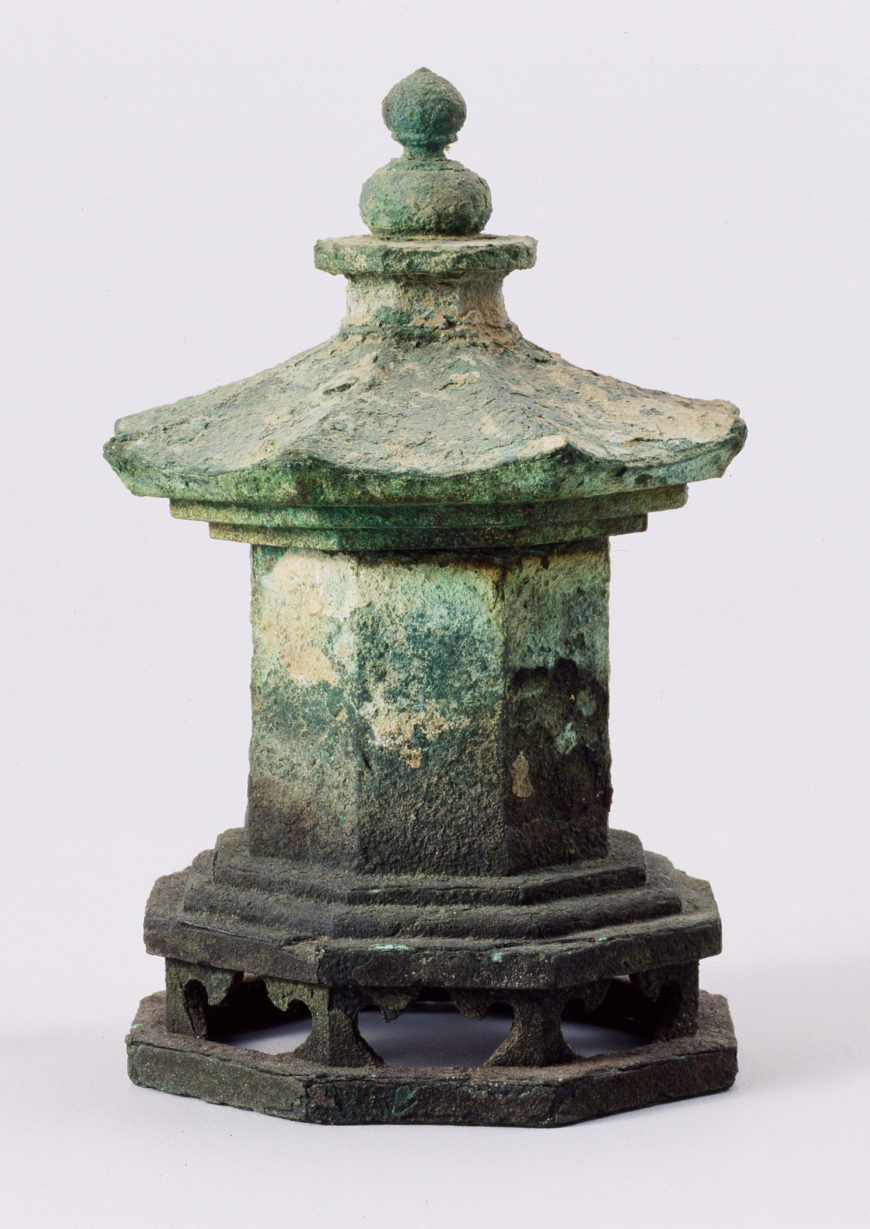
Octagonal house-shaped sarira reliquary, Unified Silla Period, gilt bronze, 10.4 x 3.7 x 6.1 cm (National Museum of Korea)
After Silla adopted cremation as its primary funerary practice, cremated remains were treated in one of two different ways. In some cases, the ashes were scattered. For example, King Munmu declared in his will that his funeral be held at Daewangam Rock in the East Sea, where his ashes were then spread. In other cases, the ashes were kept in some type of container. The earliest known example of this practice relates to the Silla monk Jajang, whose cremated remains are said to have been placed in a hole in a stone (石穴). Eventually, it became common practice for the cremated remains of monks and other Buddhist figures to be kept in a pagoda or stupa. These remains are called “sarira,” and the containers that held them are known as “sarira reliquaries.”
Cremated remains were also sometimes placed in a container and buried, in what is referred to as a “cremation burial.” In those cases, the container holding the remains is called a “funerary urn.” It is not known exactly when cremation burials with funerary urns came into practice. The earliest known artifact relating to this practice is a ceramic funerary urn that was stored (along with a mounted cup) inside a covered stone cist at Dongcheon-dong, Gyeongju. In this case, the ceramic funerary urn was a vessel that was usually used as a grave good at the time, rather than a container produced specifically for holding remains.
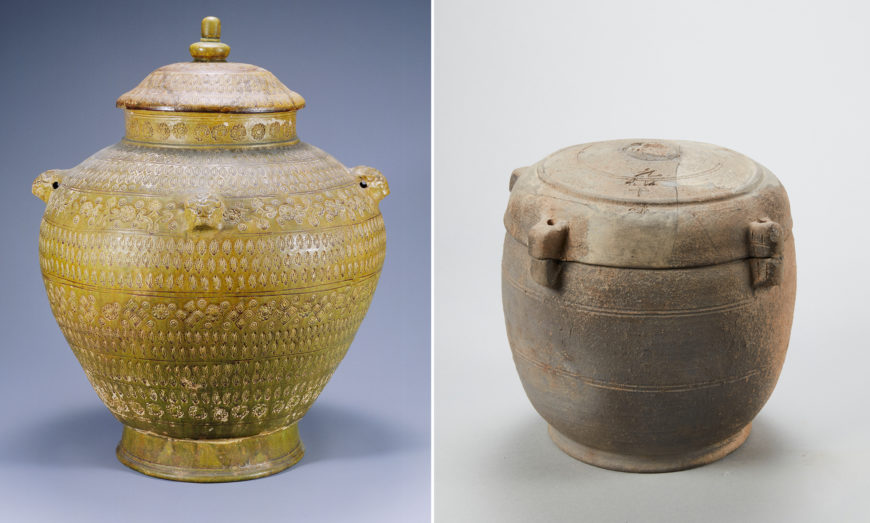
Left: green-glazed burial urn with stamped water drop and flower designs and a pagoda-shaped knob, 9th century (Unified Silla), 39 x 19 x 20.7 cm, from Namsan Mountain, Gyeongju (National Museum of Korea); right: funerary vessel with eyelets, 815 (Unified Silla), 21.3 x 19.3 cm (Gyeongju National Museum)
Silla funerary urns are typically ceramic vessels shaped like jars, although some urns with more interesting forms have also been identified. In the seventh century, when the practice of cremation was not yet widespread, cremated remains were often stored in spherical ceramic vessels that had likely been produced for other purposes. In the eighth century, as the number of cremation burials in Silla increased, more diverse types of urns were used, some of which were lavishly decorated with stamped patterns. By the ninth century, vessels with various forms, materials, and designs were being produced specifically to serve as funerary urns. Some ninth-century urns have pagoda-shaped knobs atop the lid, while others have eyelets on the lid and body, so that the lid could be securely fastened to the body with strings or cords.
Excavations of various sites in Gyeongju, the former capital of Silla, have allowed researchers to trace the development of cremation burials involving funerary urns. For example, vessels containing cremated remains have been found interred in pits or stone cists at Hwangseong-dong Burial 23; Gabsan-ri Burial 5; Seokjang-dong Burials 51, 61, 62, and 73; the site believed to be the burial of King Minae; and the earthen mound of Chunghyo-dong Tomb 3 (which is a stone-chamber tomb).
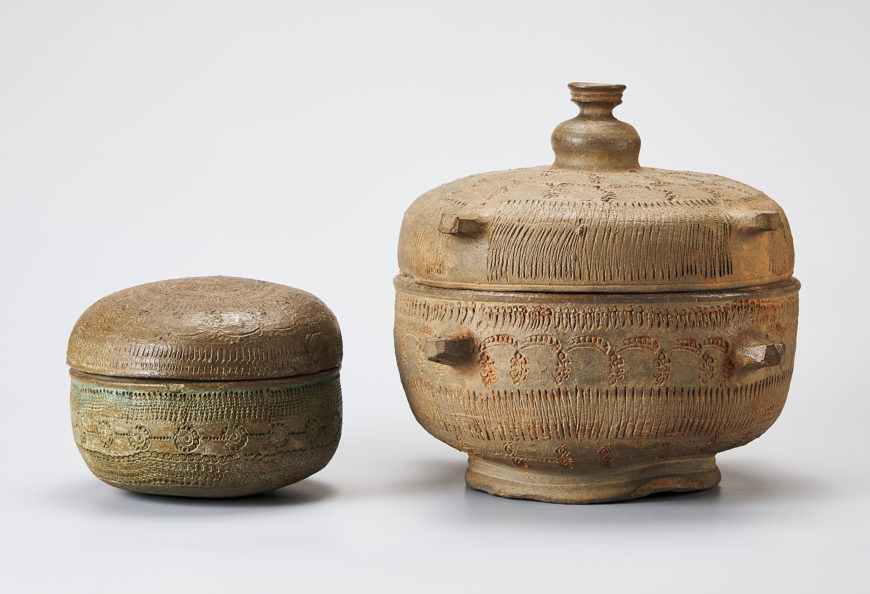
Funerary vessels with stamped designs, 8th century (Unified Silla), clay, outer vessel: 14.9 x 17.2 cm (National Museum of Korea)
In other cremation burials, inner urns, which were usually ceramic, were placed inside outer protective caskets. Vessels used in this type of cremation burial have been recovered from various sites in Gyeongju, including one in Hwagok-ri (Naenam-myeon) and one in Seokjang-dong (at the site of the Dongguk University Student Union Building extension). Notably, the cremation burial at Hwagok-ri also yielded figurines of the twelve Chinese zodiac animals, while the lid of the inner urn from the burial in Seokjang-dong was actually a celadon bowl from the Yuezhou kilns of China’s Tang Dynasty. Also, a sancai (tri-colored) tripod vessel of the Tang Dynasty was found inside a stone cist on a mountainside in Joyang-dong, Gyeongju. These excavations suggest that the people of Silla were importing high-quality ceramics from the Tang Dynasty. Collectively, these discoveries indicate that cremated burials featuring inner and outer containers were commonly conducted in the royal capital of Silla.

Stone casket and funerary urn, 9th century (Unified Silla), casket: 43 cm high, urn: 16.4 cm high, attributed to Gyeongju, National Treasure 125 (National Museum of Korea; photo: Cultural Heritage Administration of the Republic of Korea)
Buddhism and cremation burials
Although the tradition of cremation dates back to the Neolithic Period, it was not widely practiced until the introduction and spread of Buddhism, which transformed perceptions of life and death throughout East Asia, including in ancient Korea. In India, cremation was already practiced before the origin of Buddhism, as a way of freeing the spirit from the body and cleansing the soul with fire in preparation for reincarnation. After Gautama Buddha (i.e., Prince Siddhartha) was cremated at his funeral, cremation then became the standard funerary procedure of Buddhism.
Introduced during the Three Kingdoms Period, Buddhism had a profound impact on the politics, society, and culture of Silla. In particular, the Buddhist philosophy of endless reincarnation transformed the perception of death and, consequently, the funerary practices of Silla. Formerly, the afterlife had been thought of as an extension of one’s present life, with tombs thus being regarded as essential resting places for entering the next world. Following the adoption of cremation, however, burial facilities became simpler and large tomb mounds were no longer constructed. Buddhist cremation rituals seem to have been widely adopted throughout Silla, as people sought to shed all material belongings in order to free themselves from the cycle of endless death and achieve nirvana.
Notably, however, a contemporary examination of Silla funerary urns produced during the peak period of cremation burials reveals that the precedent beliefs about the afterlife had not been completely abandoned, even after the rise of Buddhism. As exemplified by National Treasure 125, many funerary urns were produced with high-quality materials and sophisticated technology, perhaps reflecting the desire to carry one’s power and wealth into the afterlife. Also, some of the funerary vessels found in Gyeongju were modeled after sarira reliquaries, suggesting that the Silla elite may have attempted to associate their own deaths with the tradition of sarira, which were objects of worship in Buddhism. It should come as no surprise that ancient people wished to extend the affluence of their present lives into the next world, just as we continue to strive to live meaningful lives in the face of inevitable death.
